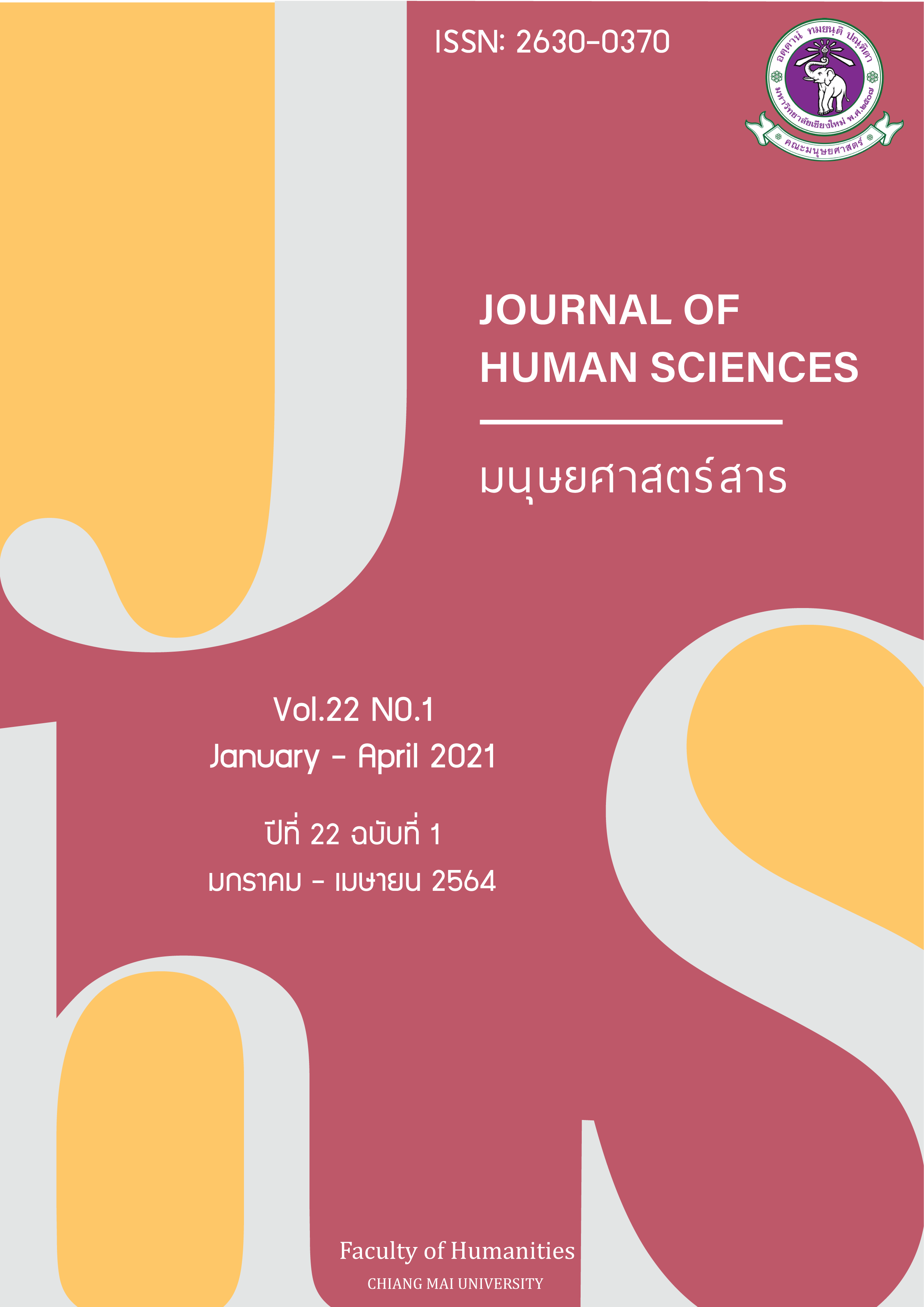การวิเคราะห์องค์ประกอบของจุดแข็งเชิงจิตวิทยาในบริบทสังคมไทย: การศึกษาจากคำศัพท์พรรณนาลักษณะบุคคล
Main Article Content
บทคัดย่อ
การวิจัยครั้งนี้มีวัตถุประสงค์เพื่อศึกษา (1) องค์ประกอบของจุดแข็งเชิงจิตวิทยาในบริบทสังคมไทย โดยใช้แนวทางการศึกษาคำศัพท์พรรณนาลักษณะบุคคล และ (2) ความสัมพันธ์ระหว่างองค์ประกอบของจุดแข็งเชิงจิตวิทยาที่ได้จากการศึกษาคำศัพท์พรรณนาลักษณะบุคคลกับลักษณะบุคลิกภาพ 6 องค์ประกอบ โดยการวิจัยครั้งนี้แบ่งออกเป็น 2 ช่วง ช่วงที่ 1 เป็นการศึกษาคำศัพท์พรรณนาลักษณะบุคคล เพื่อระบุองค์ประกอบของจุดแข็งเชิงจิตวิทยาในบริบทสังคมไทย และช่วงที่ 2 เป็นการศึกษาเชิงสหสัมพันธ์ เพื่อศึกษาความสัมพันธ์ระหว่างองค์ประกอบของจุดแข็งเชิงจิตวิทยาที่ได้จากการศึกษาคำศัพท์พรรณนาลักษณะบุคคลกับลักษณะบุคลิกภาพ 6 องค์ประกอบ
เครื่องมือที่ใช้ในการวิจัยช่วงที่ 1 ประกอบด้วยเครื่องมือ 3 ชุด ได้แก่ (1) แบบบันทึกคำศัพท์พรรณนาลักษณะบุคคล (2) แบบบันทึกความสอดคล้องกันในการค้นหาคำศัพท์ และ (3) แบบตรวจสอบความถูกต้องของการจัดกลุ่มคำศัพท์ สำหรับการวิจัยช่วงที่ 2 กลุ่มตัวอย่างได้แก่นักศึกษาระดับปริญญาตรีของมหาวิทยาลัยเชียงใหม่ที่ลงทะเบียนเรียนในภาคเรียนที่ 1/2562 และ 2/2562 จำนวนทั้งสิ้น 1,042 คน เครื่องมือที่ใช้ในการวิจัยประกอบด้วย (1) แบบประเมินจุดแข็งเชิงจิตวิทยา (2) แบบประเมินลักษณะบุคลิกภาพ 6 องค์ประกอบ (3) แบบสอบถามข้อมูลส่วนบุคคล
ผลการวิจัยช่วงที่ 1 พบว่าคำศัพท์พรรณนาลักษณะของบุคคลที่สะท้อนจุดแข็งเชิงจิตวิทยาและได้รับการยืนยันจากผู้เชี่ยวชาญ มีจำนวนทั้งสิ้น 261 คำ และสามารถจำแนกได้เป็น 22 กลุ่ม
ผลการวิจัยช่วงที่ 2 พบว่า (1) จุดแข็งเชิงจิตวิทยาแต่ละด้านมีความสัมพันธ์กับลักษณะบุคลิกภาพ 6 องค์ประกอบ และ (2) ลักษณะบุคลิกภาพ 6 องค์ประกอบสามารถทำนายจุดแข็งเชิงจิตวิทยาแต่ละด้านได้ โดยลักษณะบุคลิกภาพด้านความสำนึกผิดชอบมีอำนาจทำนายจุดแข็งเชิงจิตวิทยาได้ในจำนวนที่มากที่สุด รวม 14 จุดแข็ง รองลงมาได้แก่ด้านการเปิดเผยตนเอง สามารถทำนายได้ 7 จุดแข็ง ด้านการเปิดรับประสบการณ์สามารถทำนายได้ 5 จุดแข็ง ด้านการตอบสนองทางอารมณ์สามารถทำนายได้ 2 จุดแข็ง และด้านความซื่อสัตย์-ถ่อมตนและด้านการเห็นตามผู้อื่นสามารถทำนายได้ 1 จุดแข็ง
Article Details
References
Asplund, J., Agrawal, S., Hodges, T., Harter, J., & Lopez, S.J. (2014). The Clifton StrengthsFinder® 2.0 technical report: Development and validation [technical report]. Washington, DC: Gallup.
Bentler, P. M., & Chou, C.-P. (1987). Practical Issues in Structural Modeling. Sociological Methods & Research, 16(1). 78–117.
Dahlsgaard, K., Peterson, C., & Seligman, M. E. P. (2005). Shared virtue: The convergence of valued human strengths across culture and history. Review of General Psychology, 9(3), 203–213.
De Vries, R. E. (2013). The 24-item brief HEXACO inventory (BHI). Journal of Research in Personality, 47(6). 871–880.
Furnham, A., & Ahmetoglu, G. (2014). Personality, ideology, intelligence, and self-rated strengths. Psychology, 5(08). 908–917.
Goldberg, L. R. (1981). Language and individual differences: The search for universals in personality lexicons. In L. Wheeler (Ed.), Review of personality and social psychology (Vol. 2, pp. 141–165). Beverly Hills, CA: Sage.
Goodman, F. R., Disabato, D. J., & Kashdan, T. B. (2018). Integrating psychological strengths under the umbrella of personality science: Rethinking the definition, measurement, and modification of strengths. The Journal of Positive Psychology, 1-7.
Hofstede, G. H. (2001). Culture’s consequences: Comparing values, behaviors, institutions and organizations across nations. Thousand Oaks, CA: Sage.
Kidder, R. M. (1994). Shared values for a troubled world: Conversations with men and women of conscience. San Francisco: Jessey-Bass.
Komin, S. (1991). Psychology of the Thai people: Values and behavioral patterns. Bangkok: Research Center, National Institute of Development Administration.
Küng, H. (1998). A global ethics for global politics and economics. Oxford: Oxford University Press.
Lee, K., & Ashton, M. C. (2008). The HEXACO personality factors in the indigenous personality lexicons of English and 11 other languages. Journal of Personality, 76(5). 1001–1054.
Lee, K., Ashton, M. C., Morrison, D. L., Cordery, J., & Dunlop, P. D. (2008). Predicting integrity with the HEXACO personality model: Use of self- and observer reports. Journal of Occupational and Organizational Psychology, 81(1). 147–167.
Liang, C. T., Chia, T. L., & Liang, C. (2015). Effect of personality differences in shaping entrepreneurial intention. International Journal of Business and Social Science, 6(4). 166-176.
Linley, A., Willars, J., & Biswas-Diener, R. (2010). The strengths book: What you can do, love to do, and find it hard to do – and why it matters. Coventry, UK: CAPP Press.
McCrae, R. R., & John, O. P. (1992). An Introduction to the Five-Factor Model and Its Applications. Journal of Personality, 60(2). 175–215.
McCullough, M. E., Tsang, J., & Emmons, R. A. (2004). Gratitude in intermediate affective terrain: Links of grateful moods to individual differences and daily emotional experience. Journal of Personality and Social Psychology, 86(2). 295-309.
McGrath, R. E., Hall-Simmonds, A., & Goldberg, L. R. (2017). Are measures of character and personality distinct? Evidence from observed-score and true-score analyses. Assessment, 1-19.
Mesurado, B., Mateo, N. J., Valencia, M., & Richaud, M. C. (2014). Extraversion: Nature, development and implication to psychological health and work life. In A. D. Haddock & A. P. Rutkowski, Psychology of Extraversion (pp. 1-13). Hauppauge, NY: Nova.
Moutafi, J., Furnham, A., & Tsaousis, I. (2006). Is the relationship between intelligence and trait Neuroticism mediated by test anxiety? Personality and Individual Differences, 40(3). 587–597.
Noftle, E. E., Schnitker, S. A., & Robins, R. W. (2011). Character and personality. Designing Positive Psychology, 207–227.
Park, N. & Peterson, C. (2005). The values in action inventory of character strengths for youth. In K. Moore, L. Lippmann (Eds.). What do children need to flourish? (pp. 13–23). NY: Spring.
Pervin, L. A. (1980). Personality theory and assessment. NY: Wiley.
Peterson, C., & Seligman, M. E. P. (2004). Character strengths and virtues: A classification and handbook. Washington, DC: American Psychological Association.
Ringle, C. M., Wende, S., & Becker, J. M. (2015). SmartPLS 3. Boenningstedt: SmartPLS GmbH. Retrieved from http://www.smartpls.com.
Saucier, G., & Goldberg, L. R. (2001). Lexical studies of indigenous personality factors: Premises, products, and prospects. Journal of Personality, 69. 847–880.
Saucier, G., Georgiades, S., Tsaousis, I., & Goldberg, L. R. (2005). The factor structure of Greek personality adjectives. Journal of Personality and Social Psychology, 88(5). 856–875.
Seligman, M. E. P., & Csikszentmihalyi, M. (2000). Positive psychology: An introduction. American Psychologist, 55(1). 5–14.
Sternthal, B., Tubott, A. M., Calder, B. J., & Richard, P. (1994). Experimental design: Generalization and theoretical explanation. In R. P. Bagozzi (Ed.), Principles of marketing research (pp. 195-223). Oxford: Blackwell.
Triandis, H. C. (1988). Collectivism vs. individualism. In G. Verma & C. Bagley (Eds.), Cross-cultural studies of personality, attitudes and cognition (pp. 60-95). London: Macmillan.
Wright, B., Peters, E., Ettinger, U., Kuipers, E., & Kumari, V. (2014). Understanding noise stress-induced cognitive impairment in healthy adults and its implications for schizophrenia. Noise and Health, 16(70). 166.

